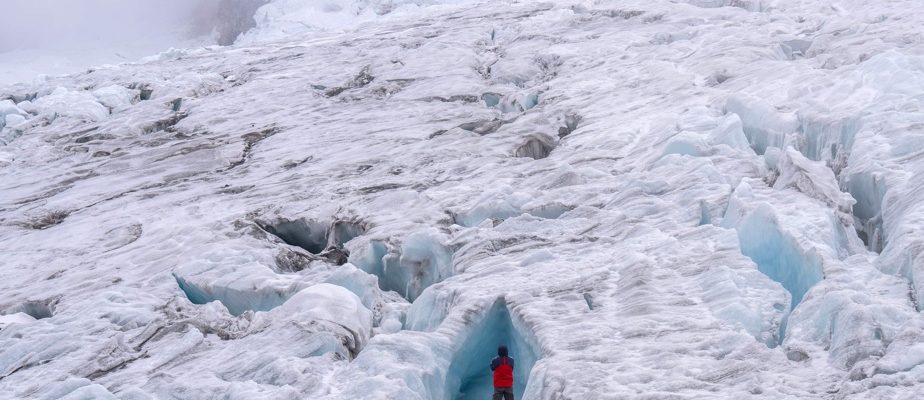(El Cocuy) Until a few months ago, Ritacuba Blanco, one of the highest peaks in Colombia, was covered in a uniform snow cover. But rising temperatures have recently caused large cracks in the ice that bear witness to its slow death.
Since last November and the rise in temperatures in the country due to the El Niño weather phenomenon, the white mantle has started to melt at a dizzying speed, experts warn.
In its lowest part, where AFP was able to go, at an altitude of 4,950 meters, large cracks now reveal the hitherto hidden rock. The authorities blame El Niño, which has hit Colombia since the end of 2023.
The weather phenomenon is generally associated with rising temperatures and significant droughts that can lead to devastating wildfires. It occurs on average every two to seven years, and episodes usually last nine to twelve months.

PHOTO LUIS ACOSTA, AGENCE FRANCE-PRESSE
The current episode takes place “in the context of a climate modified by human activities,” noted the World Meteorological Organization (WMO).
Colombia, which has one of the richest biodiversity in the world, recorded the hottest month in its history in March, with temperatures reaching 42.4°C in places.
“The El Niño phenomenon is perhaps the worst thing that can happen to our snow-capped peaks or our glaciers,” said Jorge Luis Ceballos, glaciologist at the Institute of Hydrology, Meteorology and Environmental Studies (Ideam). “There is no cloud cover and therefore no snowfall,” he emphasizes.
Of the 14 tropical glaciers that existed in Colombia at the beginning of the 20e century, there are only six left. Ritacuba Blanco, located in the Sierra Nevada del Cocuy National Park, about 250 km northeast of the capital Bogota, is the most imperiled of the country’s still snow-capped peaks.
“At the end of last year, the walls here were about six meters high […] today, they are practically no more than a meter long,” underlines guide Edwin Prada.
” Worse and worse ”
According to the most recent data, from 2022, some 12.8 km2 of this territory were then covered with ice and snow, the lowest extent since Ideam began carrying out surveys. In 2010, the snow cover covered 16.5 km2 and even 19.8 km2 in 2003.
In recent months, “the snow has melted due to the lack of precipitation and the ice has been exposed to solar radiation, which has accelerated the thaw,” explains Mr. Ceballos.

PHOTO LUIS ACOSTA, AGENCE FRANCE-PRESSE
In 2023, the planet experienced the highest temperatures ever recorded, according to the European Climate Observatory Copernicus (C3S). In Asia, the most affected continent, the icy peaks of the Himalayas are also disappearing, threatening the region’s water security, according to the WMO.
The El Niño phenomenon also caused major fires in Colombia this year. In total, more than 17,000 hectares of forests went up in smoke throughout the country. Part of the flames reached the paramos, these fragile ecosystems specific to Andean countries.
Many small lakes which usually supply the villages with water have also dried up.
In an unprecedented move this century, the Colombian capital decreed rationing of the water supply service three weeks ago due to the low level of its reservoirs.
Humberto Estepa, a resident of Güican, a village near Ritacuba Blanco, trembles every time he goes to the foot of the glacier.
The thaw “this year was too significant,” he assures us. “It’s getting worse and worse, there are new crevasses, more thawing”, saying he is “very nostalgic”.
